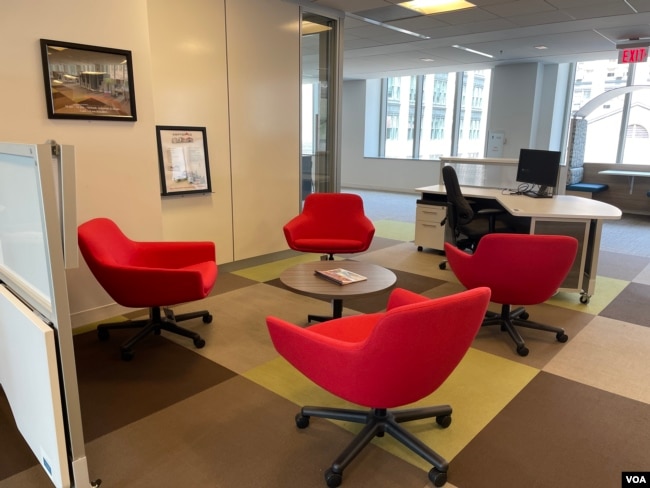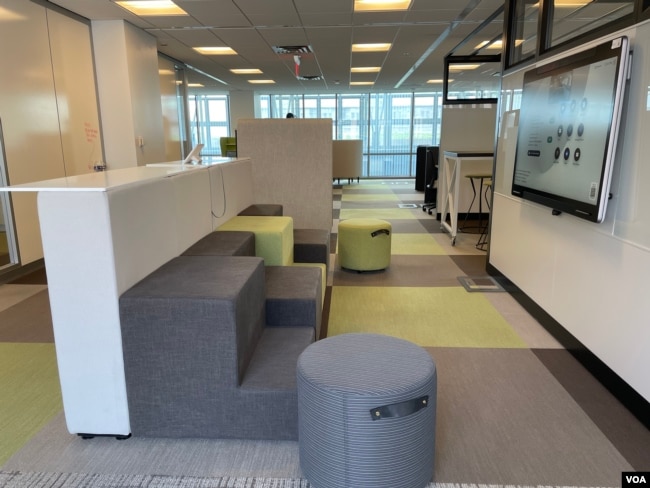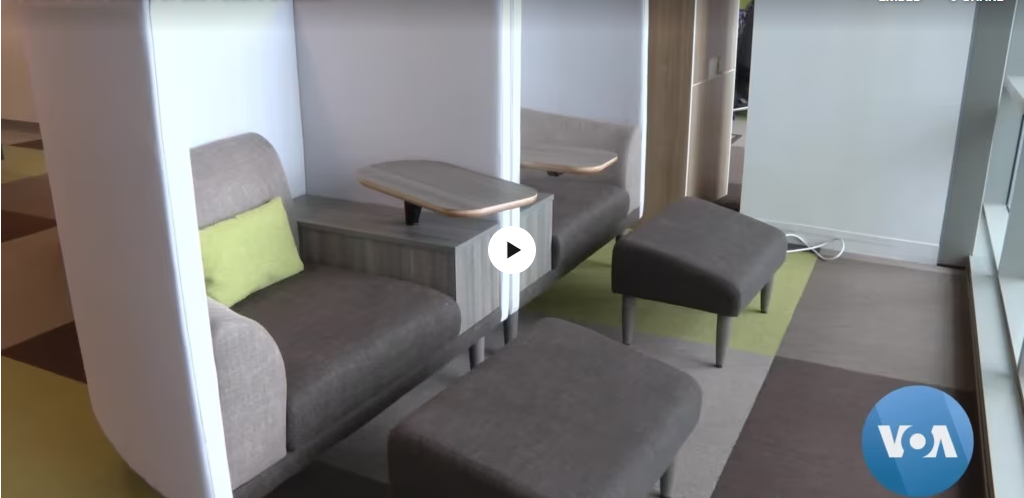The COVID-19 pandemic has changed how people in the U.S. work.
Before the pandemic, only 5.7 percent of people worked from their homes. But a recent report from the business advisor McKinsey & Company found that 58 percent of people worked from home at least one day a week in 2022.
Ryan Luby helped write the report. He said the office needs to change because the role of the workplace has changed.
Aditya Sanghvi is with the property business of McKinsey & Company. He said: “The office has suddenly become a choice. It’s an option. And the office has to be better for someone than working from home and enduring the commute to come into the office.”
One change office spaces need is more focus on community in the workplace. “When you get to the office, if you’re not engaging with anyone else, you might as well not be there,” Luby said.
He added, “The office should be a place where you’re doing group work.”
Sanghvi added that, in the new workspace, people should feel like “there’s no difference between whether or not someone’s sitting with you in the office or somebody’s [on] video.”

The office of the future might even help workers with their personal responsibilities.
“One of the reasons that a lot of people work from home is that they have to pick up the kids or take care of the dog,” Sanghvi said. “And so, what if there were [animal] care in the building? What if there was child care in the building?”
Sanghvi believes companies that own the office space should be more active in changing workspaces for the new way of life.
The U.S. General Services Administration (GSA) is the government agency that supervises federal buildings. The GSA has been a leading force in establishing what the office of the future will look like.
Chuck Hardy is GSA’s chief architect. He supervises GSA’s Workplace Innovation Lab, a 25,000-square-foot space inside the organization’s headquarters in Washington, D.C.
“What we’re trying to do is create a workplace and an environment that allows you to be as productive as you can be without getting in the way. And that means a variety of spaces for a variety of the people that work for us,” Hardy said.

The Workplace Innovation Lab will be open for one year. Federal workers can try out the latest in workplace furnishings and technology and then provide comments on their experience.
Some spaces in the lab look like traditional workspaces. Some spaces feel pleasant. Almost everything can be moved around. The air quality is controlled, and technology that is believed to be good for the environment is being tested.
Hardy said the office of the future needs three qualities. It should be well-designed, serve a purpose and feel pleasant.
All of this might mean that the office of the future could feel a little bit more like home.
I’m Andrew Smith.
Dora Mekouar reported this story for the Voice of America. Gena Bennett adapted it for VOA Learning English.
____________________________________________________
Words in This Story
role–n. the part that a person or something plays in an activity or operation
option–n. one of several choices that can be made in a situation
endure–v. to suffer
focus–n. bring attention and thought to a subject, issue or problem
engage–v. to communicate or be involved with others in a meaningful way
variety–adj. different in size, amount, degree, or nature
architect–n. a person who plans, designs and supervises the building of structures
furnishings–n. the furniture, curtains, carpets, and decorations in a space
